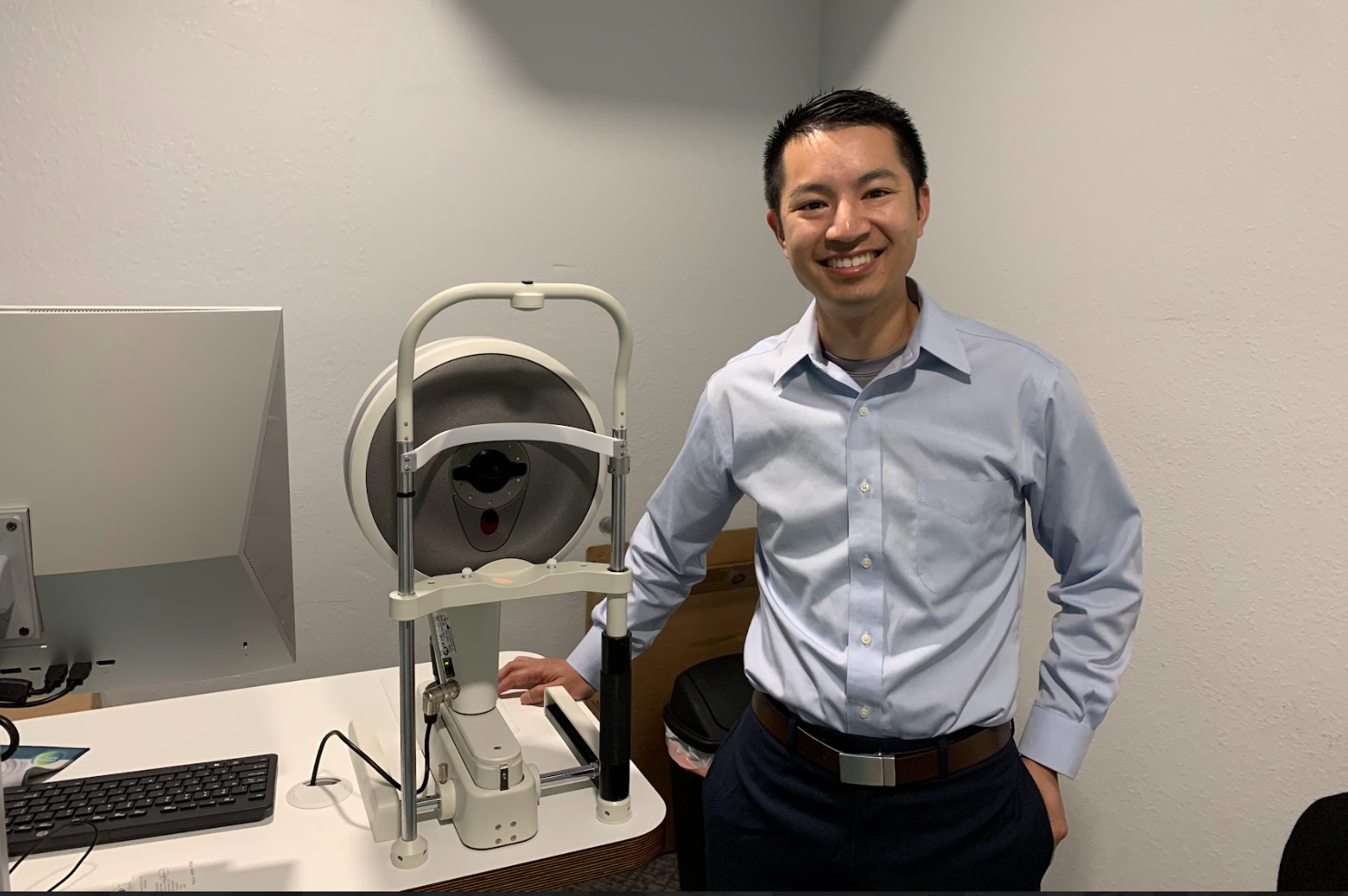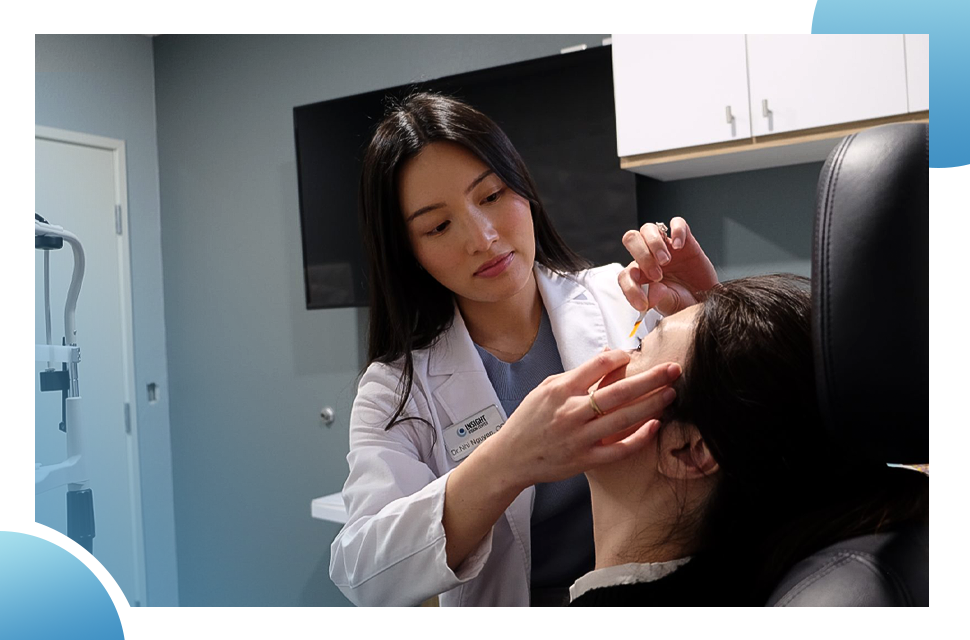
If you are experiencing blurred vision or discomfort, understanding Fuchs’ Corneal Dystrophy is essential to preserving your sight. At Insight Vision Center Optometry, we offer comprehensive exams and personalized treatment plans to help you manage this progressive condition effectively. Our experienced eye doctors are dedicated to enhancing your quality of life through timely interventions and informed care.

Understanding the Disease Mechanism
Vision Impact and Recognizing Symptoms
For many individuals, Fuchs’ Corneal Dystrophy begins as an almost silent change, with symptoms that come and go. However, over time, the loss of endothelial cells compromises the cornea’s ability to stay clear, and the following symptoms can become more pronounced
Common Visual Symptoms
- Fluctuating vision, especially in the mornings
- Increased sensitivity to light and glare
- Halos around lights
- Blurred or hazy vision during periods of corneal swelling
- A sensation of discomfort or mild pain when bullae rupture
These symptoms are often more noticeable in individuals over the age of 50, as natural aging and the disease itself combine to further affect endothelial cell health.
Stages and Diagnosis

Understanding Fuchs’ Dystrophy: Treatment Options
Fuchs’ Corneal Dystrophy (FCD) is a progressive eye disease that causes swelling (edema) in the cornea, leading to blurry vision, discomfort, and eventual vision loss if untreated. While there is no outright cure, a variety of treatments—ranging from symptom management to surgical interventions—can help preserve vision and improve quality of life.
Managing Symptoms in the Early Stages
In the early stages, treatment is all about controlling corneal swelling to keep vision as clear as possible. Some of the most common first-line treatments include:
- Hypertonic Saline Drops and Ointments – These help draw excess fluid out of the cornea, reducing swelling and temporarily improving vision. However, they do not stop the disease from progressing.
- Scleral Lenses – These specially designed contact lenses create a fluid-filled reservoir over the cornea, keeping it hydrated and providing a smoother surface for clearer vision. More on these below!
While these methods can help in the short term, they do not reverse the disease. As Fuchs’ dystrophy progresses, surgical options may become necessary.

Surgical Treatments for Fuchs’ Dystrophy
When vision loss becomes significant, surgery is often the best solution. The two main surgical approaches are corneal transplants and Descemet Stripping Only (DSO).
Corneal Transplants: Full vs. Partial
Traditionally, the go-to surgical treatment for advanced Fuchs’ dystrophy has been corneal transplantation. This can be done in two ways:
- Penetrating Keratoplasty (PK) – The entire cornea is replaced with a donor cornea. While effective, it has a longer recovery time and a higher risk of complications, such as rejection, astigmatism, and infection.
- Endothelial Keratoplasty (EK) – A more modern approach that replaces only the damaged inner layer of the cornea, rather than the full cornea. This method has a quicker recovery time and fewer risks compared to PK.
Two types of EK procedures:
- Descemet Stripping Endothelial Keratoplasty (DSEK) – The diseased corneal layer is removed and replaced with donor tissue. It’s widely used and offers good visual improvement.
- Descemet Membrane Endothelial Keratoplasty (DMEK) – A more refined technique that replaces only the thin Descemet membrane and endothelial cells. It offers better visual outcomes, a lower risk of rejection, and faster recovery than DSEK
Both PK and EK require donor corneas, which may not always be immediately available. Additionally, some patients may still need glasses or contacts post-surgery for the best vision correction.
Descemet Stripping Only (DSO): A Non-Transplant Approach
A newer, non-transplant alternative called Descemet Stripping Only (DSO) is gaining attention. In this procedure, the surgeon simply removes the damaged endothelial cells without replacing them with donor tissue. Instead, the surrounding healthy cells migrate and repopulate the area.
Why consider DSO?
- No risk of transplant rejection – Since no donor tissue is used, there’s no need for long-term immunosuppressive eye drops.
- Faster recovery – Healing can be boosted with ROCK inhibitors (like ripasudil), which help encourage endothelial cell growth.
- Not for everyone – DSO only works if the patient has a good number of remaining healthy endothelial cells.
Early research suggests that carefully selected patients can regain excellent vision without needing a transplant, making this a promising option for some.
Scleral Lenses: A Non-Surgical Alternative for Vision Clarity
For patients who aren’t ready for surgery or who have irregular corneas post-transplant, scleral lenses offer another way to improve vision.
What Are Scleral Lenses?
Scleral lenses are large, gas-permeable contact lenses that vault over the cornea and rest on the sclera (the white part of the eye). They create a smooth optical surface while keeping the cornea hydrated.
How do they help with Fuchs’ dystrophy?
- They correct distorted vision – By covering the damaged cornea, scleral lenses eliminate visual irregularities.
- They keep the cornea moist – The fluid layer between the lens and the eye prevents dryness and irritation.
- They offer protection – Scleral lenses act as a shield against environmental factors like wind and dust.
- They stay stable – Unlike traditional contact lenses, scleral lenses don’t move around as much, making them great for daily wear.
Which Treatment Is Right for You?
The best treatment depends on how advanced your Fuchs’ dystrophy is, your lifestyle, and your personal preferences. No matter where you are in your journey with Fuchs’ dystrophy, our experienced cornea specialist can help determine the best approach to protect and restore your vision.

Surgical Process and Postoperative Care

The Highest Rated Advanced Eye Care Center In Orange County

What Our Patients are Saying
“I love this office! The staff is so friendly, helpful, and welcoming. Dr. Lam has helped with my dry eye symptoms and myopia and takes the time to explain things thoroughly. I never feel like she is rushing me out of the office to see the next patient. She is extremely knowledgeable and I feel very well cared for. I highly recommend this office!”
⭐⭐⭐⭐⭐
Elaine N.
“More recently I had an issue with super dry eyes and they provided me multiple solutions and care instructions to heal them quickly. What I like is that it’s not all about just solving the issue, they taught me about long term care and what to change to ensure my eyes get the hydration they need.”
⭐⭐⭐⭐⭐
Maria M.
Benefits of Surgical Intervention
- Enhanced visual acuity and improvement in quality of vision
- Faster recovery of visual function, particularly with DMEK
- Lower risk of graft rejection with thinner donor tissues in DMEK
- Elimination of donor tissue concerns in DSO, reducing the chance of postoperative complications and the need for long-term steroids

Surgical Considerations
- Surgical precision is critical; even small variations in donor tissue thickness in EK can influence postoperative refractive outcomes.
- DSO recovery can be slower and requires strict patient selection, as the regenerative capacity of peripheral endothelial cells may vary.
- If a cataract is present along with Fuchs’ dystrophy, combined procedures may be considered. In these cases, careful planning is needed to minimize additional cell loss from cataract extraction.
- Long-term monitoring is important, regardless of the chosen procedure, to ensure that corneal health remains stable.
Patient Education and Personalized Care
One of the most important aspects of managing Fuchs’ Corneal Dystrophy is ensuring patients understand their condition and the various options available to them. Our cornea specialist provides thorough, personalized consultations where patients can ask questions and discuss concerns in a friendly and empathetic environment.
The goal is to equip patients with clear information so they can make informed decisions about their care. Whether it involves monitoring the progression of mild symptoms or gearing up for surgical intervention, every step is guided by our commitment to individualized care and long-term visual health.
With continuous follow-up appointments and advanced diagnostic tools, our cornea specialist is here to ensure that any progression in the condition is caught early and treated appropriately, thereby preserving vision and enhancing quality of life.

Why Choose Insight Vision Center Optometry in Costa Mesa, CA, for Fuchs’ Corneal Dystrophy Care?
At Insight Vision Center Optometry, we understand the unique visual challenges faced by patients with Fuchs’ Corneal Dystrophy—where swelling, glare, and fluctuating vision can disrupt daily life. That’s why we offer specialized treatment options, including medically necessary contact lenses like scleral lenses, designed to create a smooth optical surface and protect the cornea. With over 600 five-star reviews and a 4.9-star rating on Google and Yelp, our clinic is trusted for its advanced diagnostics and personalized approach to managing complex corneal conditions.
If you’re living with Fuchs’ Corneal Dystrophy and seeking clearer, more comfortable vision, contact Insight Vision Center Optometry in Costa Mesa, CA, to learn how we can help.
Call us at (714) 942-1361 to book your appointment, or schedule online.





